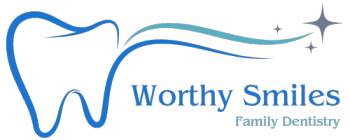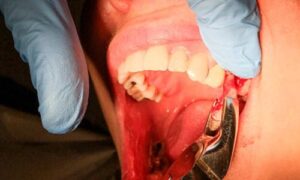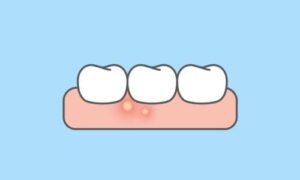Introduction
In the ever-evolving landscape of dental technology, 3D printing has emerged as a revolutionary force, ushering in a new era of customized solutions for patients. This article delves into the profound impact of 3D Printing in Dentistry, exploring its applications, benefits, challenges, and the transformative role it plays in shaping the patient experience. From creating precise dental models and prosthetics to facilitating faster and more efficient treatment planning, 3D printing has revolutionized the field of dentistry. By allowing for the production of highly accurate and personalized dental solutions, this technology has significantly improved patient outcomes and satisfaction. However, like any emerging technology, there are still challenges to overcome in terms of cost, accessibility, and regulatory considerations. Nonetheless, the transformative potential of 3D printing in dentistry is undeniable, promising a future of dental care.
Understanding 3D Printing in Dentistry
Understanding 3D Printing in Dentistry is crucial for both dental professionals and patients. It involves the use of computer-aided design (CAD) software to create a digital model of a patient’s teeth, which is then sent to a 3D printer for fabrication. This process allows for the creation of precise and customized dental prosthetics. Examples are crowns, bridges, and aligners that fit perfectly in a patient’s mouth.
What is 3D Printing in Dentistry?
3D Printing in Dentistry involves the use of additive manufacturing techniques to create precise and customized dental components. It also ranges from crowns and bridges to implants. These components are made by layering materials, such as ceramics or metals, based on digital models of a patient’s teeth or oral structures. This technology allows for greater accuracy and efficiency in dental procedures. Also, it reduces the need for traditional methods that can be time-consuming and less precise. However, the widespread adoption of 3D printing in dentistry still faces challenges, such as the high cost of equipment and materials. It limited accessibility to the technology in certain regions, and there was a need for regulatory guidelines to ensure patient safety.
How Does 3D Printing Work in Dentistry?
The process begins with a digital scan of the patient’s oral cavity. The 3D printer then translates this digital data into physical objects layer by layer, resulting in highly accurate and patient-specific dental solutions. These solutions can include dental implants, crowns, bridges, and orthodontic aligners. The ability to create these custom-made dental solutions allows for improved patient comfort and faster treatment times compared to traditional methods. However, further research and development are needed to address the current challenges and fully integrate 3D printing into routine dental practice.
The global dental 3D printing market, in terms of revenue, was estimated to be worth $3.0 billion in 2023 and is poised to reach $6.7 billion in 2028, growing at a CAGR of 17.5% from 2023 to 2028.
The Benefits of 3D Printing in Dentistry
Precision and Customization
3D Printing in Dentistry allows for unparalleled precision, ensuring that dental prosthetics fit seamlessly into the patient’s unique oral anatomy. Customization is key, leading to enhanced comfort and functionality. In addition, 3D printing in dentistry enables the creation of highly detailed and intricate dental models, which can aid in treatment planning and improve overall patient outcomes. This level of precision and customization ultimately results in better patient satisfaction and long-term oral health. Furthermore, 3D printing in dentistry reduces the need for manual adjustments and remakes, saving both time and resources for dental professionals. Additionally, the technology allows for faster production of dental prosthetics, allowing patients to receive their customized restorations in a shorter amount of time.
Time and Cost Efficiency
The efficiency of 3D printing significantly reduces the time required for producing dental components. This not only expedites the treatment process but also contributes to cost savings for both practitioners and patients. Additionally, 3D printing allows for the simultaneous production of multiple dental components, further increasing time efficiency. This technology also eliminates the need for outsourcing or waiting for traditional manufacturing methods. It reduces costs associated with third-party production and shipping.
Furthermore, 3D printing offers the advantage of customization, as dental components can be tailored to fit each patient’s unique needs and preferences. This ensures a higher level of comfort and accuracy in dental treatments. Moreover, the use of 3D printing in dentistry promotes sustainability by minimizing material waste compared to traditional manufacturing methods.
Minimally Invasive Procedures
With precise measurements and customized solutions, 3D printing enables minimally invasive procedures. Patients experience less discomfort, and recovery times are often shorter compared to traditional methods. Additionally, 3D printing allows for the creation of complex dental structures that are more durable and long-lasting, improving the overall success rate of dental procedures. This technology also offers the potential for personalized treatment plans. Dentists can easily modify and iterate on designs to meet each patient’s unique needs.
Furthermore, 3D printing in dentistry has the advantage of reducing the risk of human error in fabricating dental prosthetics and implants. This precision ensures a better fit and functionality, ultimately leading to improved patient satisfaction. Additionally, the use of 3D printing can potentially lower costs for both dental professionals and patients by eliminating the need for outsourcing or expensive materials.
Applications of 3D Printing in Dentistry
Dental Crowns and Bridges
3D printing revolutionizes the creation of dental crowns and bridges, ensuring a perfect fit and natural appearance. The technology allows for the production of intricate designs that were once challenging to achieve. This not only enhances the aesthetic outcome but also improves the functionality and durability of dental restorations. Furthermore, 3D printing enables dentists to create these restorations in a shorter amount of time, reducing the waiting period for patients and increasing overall efficiency in dental practices. In addition, 3D printing technology provides dentists with the ability to make adjustments and modifications to dental restorations more easily. This flexibility allows for a more personalized and precise fit for each patient, resulting in improved comfort and long-term satisfaction.
Dental Implants
Customized dental implants, tailored to the patient’s anatomy, are now a reality with 3D printing. This not only improves the success rate of implant surgeries but also enhances the overall patient experience. By using 3D printing technology, dentists can create dental implants that perfectly match the patient’s unique oral structure. This ensures a more secure and stable fit, reducing the risk of complications or discomfort after the surgery. Additionally, the ability to customize implants through 3D printing allows for a faster and more efficient implantation process. Also, it saves both time and resources for both the dentist and the patient. Furthermore, 3D printing technology enables dentists to create implants with intricate designs and textures, mimicking the natural appearance of teeth. This not only improves the aesthetic outcome but also boosts the patient’s confidence and self-esteem.
Orthodontic Devices
From aligners to retainers, 3D printing enables the fabrication of precise orthodontic devices. Patients benefit from more comfortable and effective orthodontic treatments. With 3D printing, orthodontic devices can be tailored to each patient’s unique dental structure, ensuring a better fit and improved treatment outcomes. This technology also allows for the production of multiple aligners or retainers at once. It also reduces manufacturing time and costs for both the dentist and the patient. Additionally, 3D printing allows for the customization of orthodontic devices, such as aligners or retainers, to address specific dental issues. This level of personalization enhances the overall treatment experience and increases patient satisfaction.
Challenges and Considerations
Material Selection
While the range of printable materials for dentistry is expanding, careful consideration must be given to the choice of materials to ensure durability, biocompatibility, and other essential properties. In addition, the selection of materials should also take into account the specific needs and requirements of each patient. Certain materials may be more suitable for certain dental conditions or treatments. Dentists must stay updated on the latest advancements in dental materials and technology to provide the best possible care for their patients. By visiting informed about new materials and technologies, dentists can offer innovative treatment options that improve patient outcomes.
Regulatory Compliance
The evolving landscape of regulations in the field of 3D printing in dentistry requires practitioners to stay informed and compliant with standards to ensure patient safety. Failure to comply with regulations can result in legal consequences and potential harm to patients. Dental professionals must understand and adhere to guidelines regarding the use of 3D printing materials, equipment, and processes to maintain a high standard of care. Additionally, staying compliant with regulations helps build trust with patients and demonstrates a commitment to their well-being. Furthermore, by staying informed and compliant with standards, dental professionals can also protect their professional reputation. Also, avoid damage to their practice. It is essential for practitioners to regularly update their knowledge and skills in order to provide the best possible care and stay ahead of advancements in 3D printing technology.
Initial Implementation Costs
While long-term cost savings are evident, the initial investment in 3D printing technology. 3D printing technology can be a barrier for some dental practices. However, it is important to consider the potential return on investment and the long-term benefits that 3D printing can bring to a dental practice. By streamlining workflows and reducing the need for outsourcing, dental practices can ultimately save money and improve efficiency. Exploring financing options or partnering with dental suppliers can help alleviate the upfront costs associated with implementing 3D printing technology.
FAQs about 3D Printing in Dentistry
Q: How does 3D printing benefit patients in dentistry?
A: 3D printing in dentistry offers patients customized solutions, precise fittings, and minimally invasive procedures. Also, it leads to improved comfort and faster recovery. 3D printing allows for the creation of complex dental structures and prosthetics that may not be possible with traditional manufacturing methods. This technology also reduces the need for multiple appointments and adjustments, saving patients time and reducing overall costs.
Q: Are 3D-printed dental components as durable as traditional ones?
A: Yes, with careful material selection, 3D-printed dental components can be as durable, if not more so, than traditional counterparts. This is because 3D printing allows for the use of high-strength materials such as titanium and ceramic, which can withstand the daily wear and tear of dental usage. Additionally, the precise customization and accuracy of 3D printing ensure a better fit, reducing the risk of damage or breakage.
Q: What is the typical turnaround time for 3D-printed dental prosthetics?
A: The efficiency of 3D printing significantly reduces turnaround times. Many components are produced in a matter of hours or days, depending on the complexity. This is a significant improvement compared to traditional manufacturing methods. It often requires weeks or even months to produce dental prosthetics. Additionally, the fast turnaround time allows for quicker patient treatment and reduces the waiting time for individuals in need of dental prosthetics.
Conclusion
In conclusion, 3D Printing in Dentistry is not merely a technological advancement. It’s a game-changer in the way dental care is delivered. As the technology continues to evolve, the benefits for both practitioners and patients are set to grow. It ushering in a new era of precision, customization, and efficiency in oral healthcare. Embrace the future of dentistry with 3D printing for a patient-centric approach that redefines the standards of care. With 3D printing, dental prosthetics can be created with unmatched precision and customization, ensuring a perfect fit for each patient. This technology also streamlines the production process, reducing both time and cost for practitioners and patients alike. The future of dentistry is undoubtedly bright with the integration of 3D printing, revolutionizing the field and improving oral healthcare outcomes for all.














